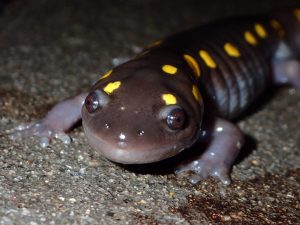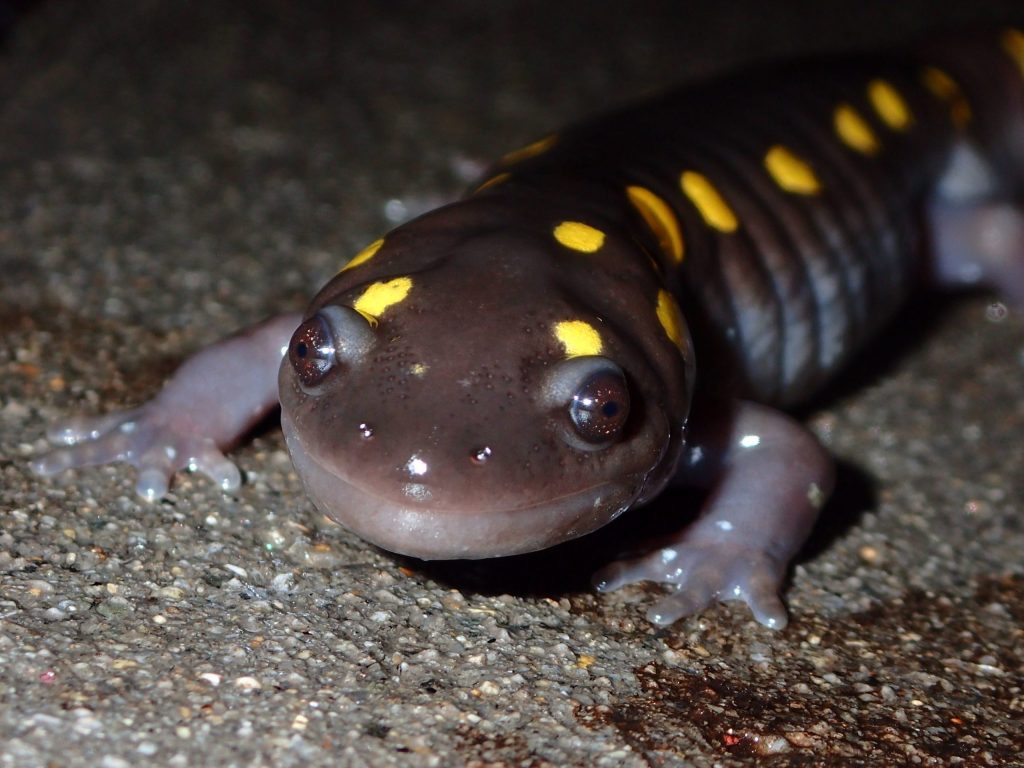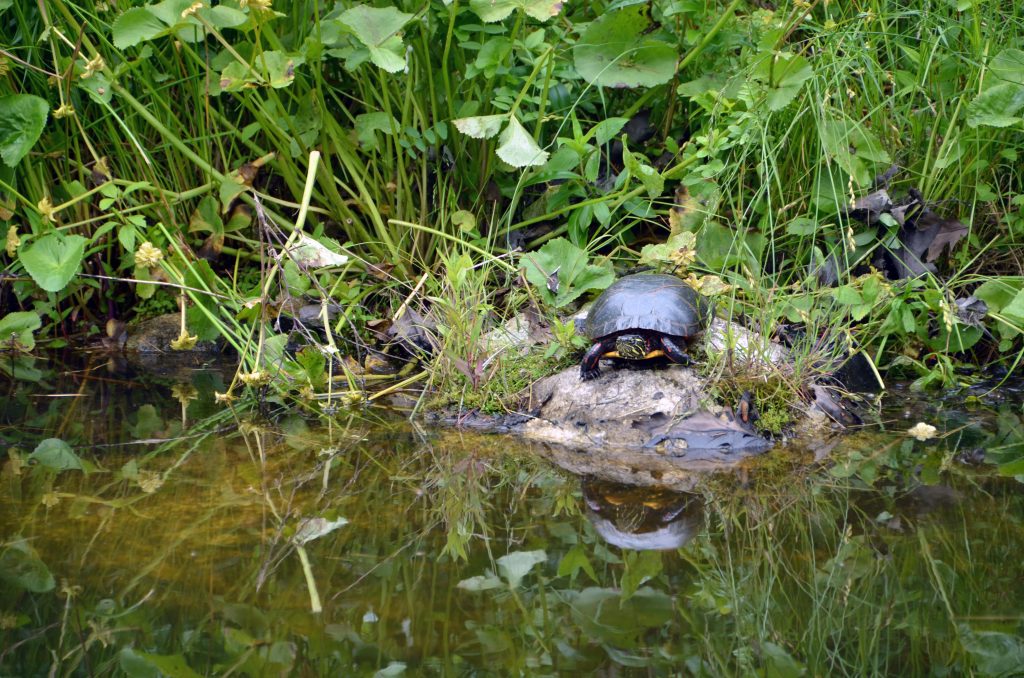Okay, then. Here’s the story (and it’s an interesting one!). Many amphibians hibernate through the winter in their adult stage. In fact, some amphibians can even survive being frozen solid! Freeze-tolerance has been studied extensively in wood frogs, who prepare for the frigid temperatures by creating a sort of “antifreeze” in their bodies, the main component of which is an accumulation of glucose (sugar) in their blood. Other amphibians exhibit this freeze-tolerance as well, and many employ the additional protection of burrowing under leaves and forest debris—with snow piled on top, that creates some nice insulation for these ectotherms (cold-blooded animals unable to create their own body heat). Some amphibians even take it a step further and actually burrow into the forest floor below the freeze line.
And then, when the conditions are just right in late winter or early spring, amphibians wake up from their hunkered-down hibernation and begin their mass migration to their breeding grounds. These action-packed nights (called “Big Nights”) are likely to occur on the first rainy nights when the temperature nudges up around 45°F. Their destination? Vernal pools (temporary wetlands that fill with snowmelt, rainwater, or heightened levels of groundwater in the spring) or nearby ponds and swampy areas. For many amphibians, these special wetlands are the only places they mate. And for many, they have to cross heavily trafficked roads to get there.
Luckily, here at Coastal Maine Botanical Gardens, no one drives on the roads at night when the amphibians are out making their big move. Last night, April 2, 2020, with the temperature hovering around 45°F and rain falling all night, a group of us were treated to quite a memorable Big Night, indeed! We recorded numerous spring peepers, wood frogs, and spotted salamanders—all that from a couple of strolls up and down the main road at the Gardens. Also spotted were a couple of American toads and one four-toed salamander!
 Right now, exploring nearby vernal pools and other wetlands where amphibians may be dwelling is an exciting and unique way to get outdoors and explore nature. Who knew so much activity could be going on while so many of us are sound asleep! If you’re interested in recording and sharing your own observations and ecological data with the Maine Amphibians Migration Monitoring group—like we’re doing here at the Gardens—you can join their Facebook group here. You will need to complete a short training and quiz, sign a safety/liability waiver, and adopt a site before going out and collecting your data for the project.
Right now, exploring nearby vernal pools and other wetlands where amphibians may be dwelling is an exciting and unique way to get outdoors and explore nature. Who knew so much activity could be going on while so many of us are sound asleep! If you’re interested in recording and sharing your own observations and ecological data with the Maine Amphibians Migration Monitoring group—like we’re doing here at the Gardens—you can join their Facebook group here. You will need to complete a short training and quiz, sign a safety/liability waiver, and adopt a site before going out and collecting your data for the project.
If you decide to take part, you will play an important role in Big Night research. By collecting and sharing your data, you can help scientists in Maine identify where significant and vulnerable populations of amphibians exist. This data can be used later on to bolster conservation efforts. That means you will be helping save amphibian lives! Even if you decide not to take part in data collection and simply go out for your own personal interest and enjoyment, you will likely have a greater appreciation for these critters after laying eyes on a charismatic salamander or a lively frog. Soak up all the amphibian wonder, just as their moist skin soaks up the water and environmental cues around them! Which reminds me: if by chance you’ll be handling any amphibians, be sure to wash your hands first for their safety—and be sure to wash your hands afterward for your safety! (If you have them, wearing powder-free nitrile gloves while handling amphibians is even better.) Be gentle with them, and have fun!
-Bridget VerVaet, Education Programs Assistant

